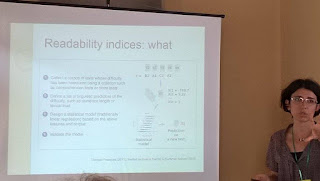Claudio Gentili
Communication is interactive change of two or more participants
- verbal and non verbal
What we need to communicate:
- we need a message
- channel
- transmitter
- receiver
Some function of communications
- expressive function
- phatic function (checking if the message is understood)
- meta linguistic (meaning of communication)
- artistic function
Relevant in clinical settings:
relational function (establish cooperation toward commune scopes) -can be verbal or non verbal!
silence is a way (powerful tool) to communicate
Axiom: there is impossible to NOT communicate in the presence of an other person
A bad communication example: Speaker 1 is presenting a topic, speaker 2 want to change the topic, speaker one return to his topic etc.
V axiom- the way you communicate is related to the interlocutor (doctor -patient= some superiority position!! the one who posses the knowledge has the power). Now- obvious here is the power of knowledge that is playing an important role in bringing the communication on equal basis.
Appearance
Spatial behaviour
Communication styles:
aggressive, passive, assertive

Patient and doctor are usually not synchronise in felling the stress when receiving the bad news (see the figure).
Patient coping reactions -grief phases-denial phase, anger toward medical doctor, barging, guilt, depression, acceptance -normal reactions; the solution seen by the speaker: doctor has to give the time to the patient to process the bad news.
Rob White presentation
Knowledge management
Why do we need knowledge management
Example -landing a airplane: focus on the problem and the checklist
First we have DATA, then the INFORMATION which will be structured in KNOWLEDGE and finally will be COMMUNICATED!
Why is this important for MPNE?
We are knowledge based organisation -we share or disseminate the knowledge pushing the knowledge across national organisations and patients groups.
For this we need an efficient NETWORK.
Some challenges:
- Subject information-where is the info available,
- The need for translation
- Key persons with knowledge are the volunteers (they can give up any moment the activity or be lost due melanoma-and knowledge is lost)
- Create human capital
- Duplicate knowledge
- Control of how the knowledge flows in the organisation
Some techniques
- Story telling socialisation
- Creation of meaning
- Socialisation
- Externalisation (slack, trello, different links)
To be continued (from Rob's presentation)
............................................................
The interaction between man and machine-challenge and limits
Nicoleta Calzolari
Computational linguistic
Human language is complex -many dimensions political, social, culture, economical
Computers are able to recognise positive feeling/negative opinions -social listening
Technologies are important for the purposes -because you can do something with; they are ''enabling'' technologies.
Have to offer access but in the same time to preserve the cultural identity
Design &development process large amount of data
The difference between research and commercial systems
(to be continued)
Improving medical communications with languages technologies, by Giulia Venturi
Health literacy is related of human ability to read/understand medical documents but
- is related to empowerment of citizens
Survey to assess the level of literacy in health in adults (16-75 years old) showed different level of health literacy in Europe.
Language technology-bridge between docs/text and knowledge
Tools able to recognise the level of difficulty of a give text for the general population -readability index of a text.
These tools have many applications:
human oriented,
machine -oriented (checking the translations)
educational scenarios (students, citizens, patients..)
Use in medical communication: PubMed



Niciun comentariu:
Trimiteți un comentariu